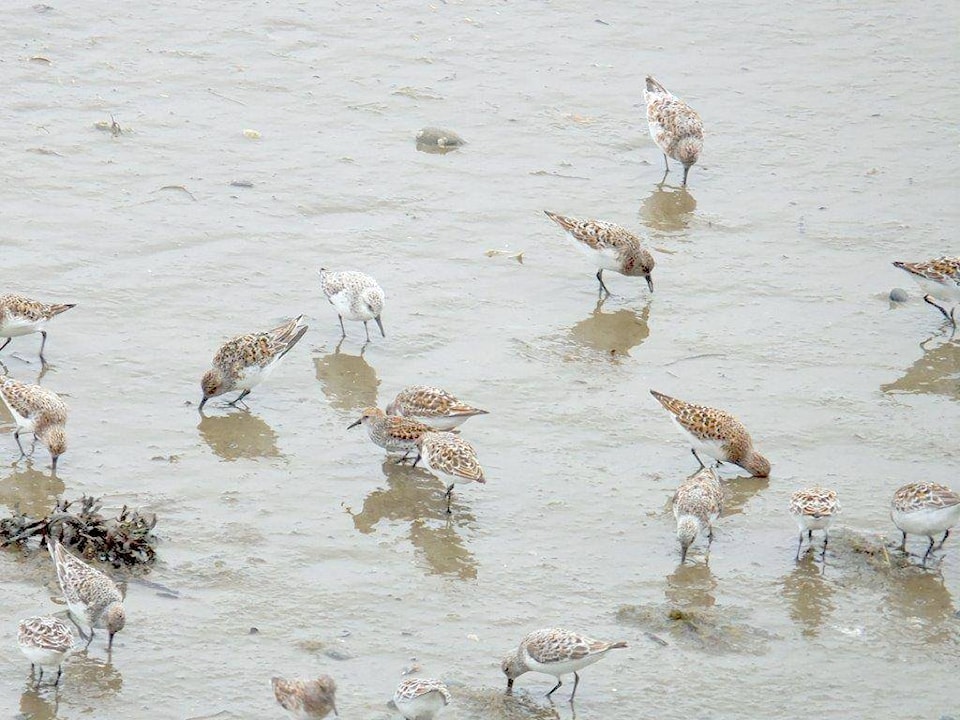By Margo Hearne
There’s nothing like a spot of drama to get the day off to a rolling start. The headline read: “Environment Canada strikes potential death blow to port’s $2 billion container expansion at Roberts Bank.” Death blow no less. What’s it all about? It’s all about diatoms, those miniscule cells with diameters between 20 to 200 microns (a millionth of a metre) that feed the world.
If the proposed port expansion in South Delta, B.C. goes ahead, according to a recent report in the Vancouver Sun, the impact on hundreds of thousands of Western Sandpipers that use the area is “potentially high in magnitude, permanent, irreversible and continuous.” The diatoms that create the algae that build the biofilm that feed the birds will be destroyed. Biofilm growth occurs in spring at the very time Western Sandpipers arrive to fuel up on their migration to the nesting grounds in the Arctic. Once destroyed there is no way back because, according to Roger Emsley of BC Nature, “Currently there are no accepted techniques to remediate for biofilm on intertidal mudflats so mitigation is not possible.”
So what are diatoms anyway? Well, they are tiny cells that occur in almost every aquatic environment. They are at the very bottom of the food chain and move by secreting a mucilaginous material which builds up around them. This mat, or biofilm, prevents the diatoms from being swept away with the tides. Biofilm provides food for tiny shrimp, sand lance, crab etc. This in turn, is fed on by migratory sandpipers.
Our surveys at Tow Hill beach on July 17, 2007 recorded 14,026 Western Sandpipers. On July 9, 1997, at the Yakoun estuary, there were 5,000. In Delkatla Wildlife Sanctuary in spring 1983 there were 2,500 and in July 1991 there were 2,000. These figures only count for one day. Hundreds of thousands come through the islands and all those busy little birds in Delkatla, at the Yakoun, or along Tow Hill Beach are feeding on something we cannot see: biofilm.
There’s a whole unknown world out there and Delkatla is ahead of the curve. When Dr. Scott Wallace was here last fall he explained the importance of the sanctuary. “Not only does it provide food for those with feathers, it also captures hundreds of times more carbon than do boreal forests, and Delkatla Wildlife Sanctuary, for its size, punches way above its weight. Diatoms there create the green, filamentous algae that traps nitrogen and phosphorus which sequesters and builds up over time,” he said.
“There are very few salt marshes in the 25,000 miles of B.C. coastline that are low gradient and not associated with a river system. We need to protect these places where water just drifts into a place and things settle in the ecosystem.”
The risk to shorebird migration at Roberts Bank could apply here if similar habitat is not protected.
